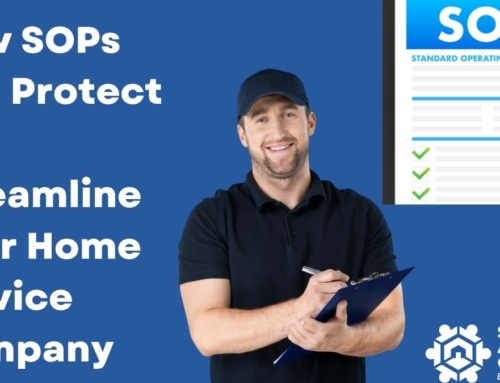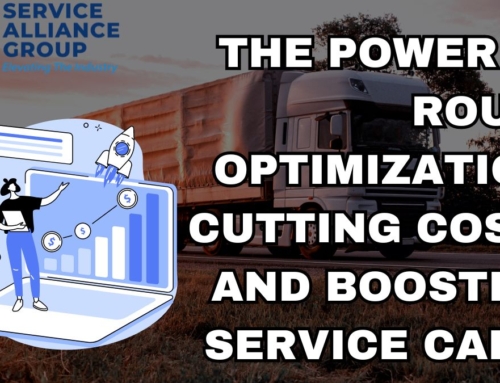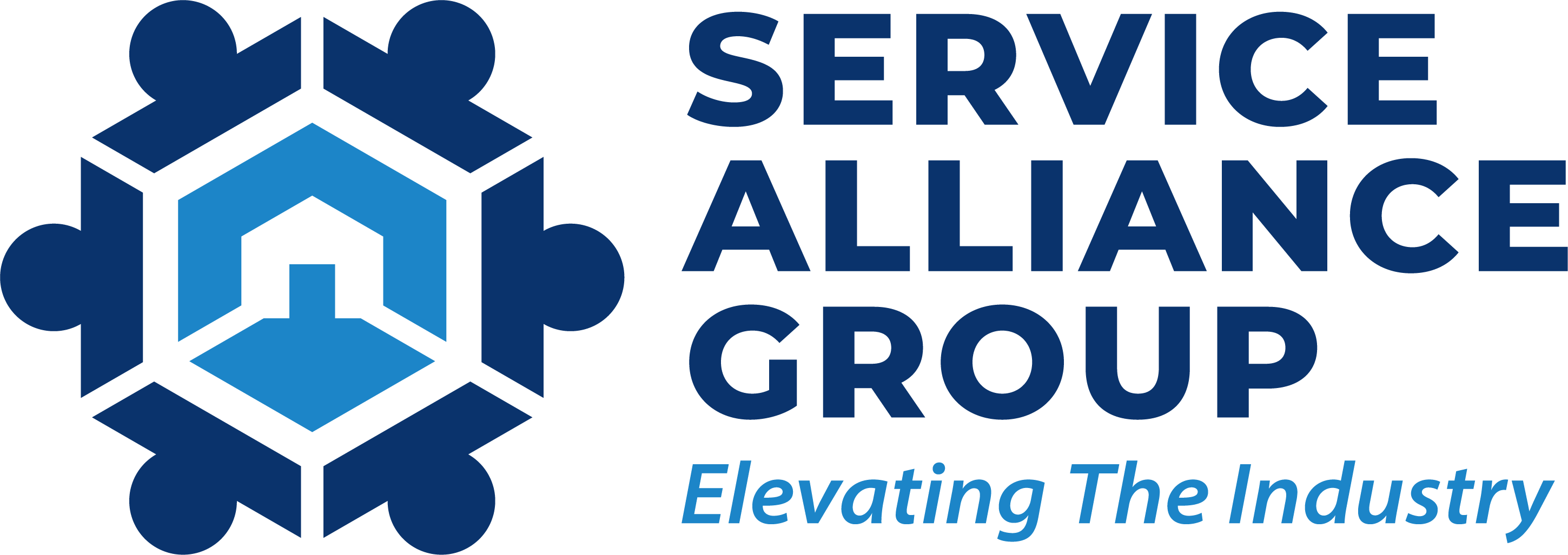Search Engine Optimization (SEO) has become an important part of online marketing strategy for service area businesses. Yet, many local businesses must realize they need to optimize their websites or social media pages for organic traffic. So what are some of the common mistakes they should avoid?
While SEO is a long-term investment, it starts out simple enough. The key is knowing where to begin and understanding how to improve your rankings continually. The following is a basic service areas business SEO guide on achieving higher SEO rankings for your service area business.
Here’s Your Service Area Business SEO Guide
Having an optimized website structure is imperative for any business. Whether you are a local business, a national brand, or a multi-location chain, you want to ensure that your website is easy to navigate and crawl. This includes ensuring that your website is structured properly, having a clear call to action, and ensuring that your site is mobile responsive.
Optimize Your Google Business Profile Specifically for Service Area Businesses
Your GMB listing should include everything you want potential customers to know about your business. This includes categories, service areas, short names, and UTM tracking codes. Then, if you still need to get a GMB profile, it’s time to make one.
The second aspect of local SEO is your website. For service-area businesses, there are two main things you need to focus on:
- Keywords
- Relevant Content
Keywords are the terms people type into search engines’ query boxes to find your business. They are typically long-tail keywords that aren’t directly related to your product or service. Instead, these are broad terms that describe your products and services.
Relevant content is the actual content on your site that helps searchers understand why they should prioritize your business over another. This ranges from a blog post explaining how your type of business solves problems to customer reviews of your work.
Optimize Your Photos in Your Google Business Profile Account
Images play a big role in helping your Google Business Profile stand out from the competition. Photos make it easier for people to discover your business online, and they can help boost your conversion rates. But there are certain points you need to keep in mind when uploading images to your Google Business Profile.
Start putting better-quality images and videos on your site, and you’ll generate more traffic. You want to avoid appearing in search results with blurry shots of your work. Google says you should upload at least 3 interior and exterior images to your Google Business Page. These images should show your best features, like your office space, products, and staff. In addition, you can add some pictures of your customers.
You can use images to showcase your most popular services, such as gym equipment, roofing installation, or landscaping service. In addition, you can use images to highlight your storefront windows, signage, parking lot, and more if you have a physical storefront. You can also use images to promote special events, like holiday sales or summer specials.
Choose the Appropriate Categories
Choosing the correct business category and secondary categories for your small business can significantly affect its performance in local searches. Conversely, choosing the right ones could help your search rankings.
The primary categories are what people use to find businesses online. They include things like restaurants, bars, salons, gyms, etc. These are the categories that show up in the local search results.
But there are secondary categories too. These are the ones that are used to refine organic searches.
For example, someone might type “gym near me.” This could mean they want to go to a gym, but it could also mean they want to know about a specific gym. So they’ll add “near me” to narrow the list of gyms.
The takeaway is that while primary categories remain extremely useful, secondary categories are becoming increasingly important. This makes sense because consumers seek more information about a particular business, and secondary categories provide just that.
Identify Your Service Area
Until recently, local business owners could define their geographic region based on the distance from their physical address, allowing Google to show them better results for local searches.
However, its updated guideline on adding or editing your business profile states that “you can set your service zone based on the cities, postal codes or other areas you serve.” Therefore, if you define the service zone and have no physical office, Google recommends leaving the ‘Business Location’ field completely blank in the Google Business Profile and not entering an address under the ‘info’ tab.
If you want to verify your business, Google doesn’t require a physical postcard sent to the address. Instead, it sends a text message to the phone number listed in the Google Business Profile account. This is done via SMS, so you need access to a smartphone to receive the verification code.
In addition to defining the service area, Google says that you can edit your service area at any time, even after you’ve submitted your application. Then, you can change the radius of your service area, whether you want to show the entire world or just within a specific geographic area.
What Happens If You Plan to Scale and Build Presence in Other Areas?
It might seem a no-brainer to list your location on every product page if you sell products online. But what happens when you’re trying to sell products to people in another state? You’d think you’d list your address and be done with it. Unfortunately, that’s only sometimes the case. Google has strict rules about how far away you can be from your physical address.
Here are 3 points you to know to avoid getting shut down.
What Is the Standard Driving Distance Rule?
The standard driving distance rule is pretty straightforward. You can create a business listing if you live within two hours’ driving distance from where someone wants to buy your stuff. However, if someone lives more than two hours away from your store, you’ll need to respect Google’s guidelines.
How Does This Affect Local Businesses?
The most important factor is that Google doesn’t allow businesses to advertise themselves outside of their physical location. So even though you’re located in San Francisco, California, you can’t claim to provide service in New York City, New York. While you can’t claim a service area more than two hours away, you can certainly claim a service area that falls under the same general region.
That being said, Google does allow some exceptions to this rule. For example, if you’re providing a service to people within a certain radius of your office, you can list your business address as long as it’s no further than two hours’ travel away. However, you’ll still need to verify your business address and ensure that it matches your physical location.
Can I Get Around This Rule With Geofencing?
Yes, you can use geofences to help you meet the standard driving distance requirement. Geofence is a term that refers to the virtual perimeter around a particular place that you’ve chosen. When someone enters that zone, you can trigger certain actions. For instance, you could send them an email telling them that you’re open now. Or you could show them a special offer.
Enhance Your Google Business Profile Business Section
The services section appears above the map listing in Google Business Profile. This area allows businesses to list their services, including regular hours of operation, contact information, and directions. While many business types could benefit from this feature, some SEO experts say that it’s best used by those that offer both physical and digital services. For example, a restaurant might include a link to its online menu, while a dentist might provide a link to his office location.
If you decide to add this section, make sure to complete everything correctly. You don’t want to miss out on potential customers because you didn’t put enough effort into making your listing look professional.
Take Advantage of Google Q&A
Google launched Google Q&A in 2017 as part of its Local Knowledge panel. This feature allows businesses to answer consumer questions directly within the search results without going to a separate website. In addition, users can ask questions about a specific business, such as what it offers, where it is located, how much it costs, etc.
The best thing about Google Q&A is that you don’t have to register; type a question in the box and press enter. You’ll see a link to the existing response if someone else has asked the same question. You can add your response if you still need to answer your question.
You can also post your question and respond to others’ posts. But remember that you should use something other than the space to promote yourself or your products. Instead, focus on answering the question clearly and helpfully.
Stir Up Engagement
Reviews from customers are the most powerful tools for building trust online. They’re a great way to build brand awareness, improve customer satisfaction, and encourage repeat visits. But what happens when you don’t respond to your customers’ comments? You risk losing out on potential sales and missing opportunities to strengthen your reputation.
Google wants to see that you’ve taken the time to read reviews and respond to positive ones. Writing a thoughtful reply to every negative comment helps Google understand that you care about your customers’ experience. Plus, it’ll make your customers feel like they matter to you.
Have Accurate Business Citations
Businesses often need to pay more attention to the importance of accurate and consistent citations across multiple platforms, such as business names, addresses, phone numbers, and websites. These citations are important because they provide information about businesses to search engines and consumers. Search engines use these citations to determine how relevant a particular business is to a given query. In addition, consumers rely on these citations to find businesses in their area. Therefore, listing your business correctly on different platforms could positively affect your business’ visibility.
Use Local SEO Keywords
One good place to start is to look at the most common terms people enter into Google when trying to find your specific product or service. This is called “keyword research.” Once you’ve identified those key terms, you’ll want to analyze where they appear on the web.
Once you’ve found some potential relevant keywords, you can go one step further by performing a paid search on Google. Here, you can select a particular city and set a budget to pay for ads that will appear above the organic listings. These ads will show up whenever someone types in a certain phrase.
Establish a Link Building Strategy Plan
The best part about internal linking is that it doesn’t require much work. The only thing to do is add a link to a page on your site. Several ways to do this include adding a text link, creating a button, or embedding a video. Once you’ve added the link, you don’t have to worry about keeping track of it. Google takes care of that for you.
You can build links using different strategies, including:
- Internal links
This involves creating links within your web pages. - External links
This involves building links from outside sources such as directories, blogs, social media profiles, etc. - Guest posts
This involves gaining links by publishing guest posts on other people’s websites. - Press releases
This involves submitting articles to publications like newspapers and magazines. - Social media sharing
This involves sharing links to your site on social media channels such as Facebook, LinkedIn, Instagram, Twitter, etc. - Directory submissions
This involves submitting your site to directories such as Yelp, Yellow Pages, City Search, etc.
On Optimizing Your Service Area Business Website
Make sure to have only a few pages dedicated to a single keyword. Instead, you need to figure out what type of content your audience wants and then create that type of content. You also need to figure out where they want to go next and create that kind of content there.
Don’t make pages just for the sake of creating pages. Then, once you’ve done that, start branching out into different niches within your primary service area. This way, you’ll be able to generate even more leads.
You want to ensure that your page is optimized for the specific location. You don’t want to use generic keywords like “local businesses” or “businesses near me.” Instead, you want to include relevant terms such as “restaurants near me,” “shops near me,” etc.
For example, let’s say that you sell cookies. If you run a ” Home-Based Business site,” you might want to start branching off into “Hybrid Business.” Or, maybe you could even do something like “Home Decoration Ideas.” These ideas aren’t related but are part of the same bigger theme.
How Local SEO Strategy and Service Area Pages Are Connected
Service area pages are one of the best means to improve your local SEO. They allow you to target specific areas within cities and towns where people generally live and work. These pages are great because they help prospects locate a service business near them.
A service area page combines a traditional landing page and a content marketing strategy. These pages are designed to attract leads and convert them into happy customers. They do this by offering something unique to the searcher—in this case, a list of nearby businesses.
Let’s say you run a restaurant chain called “Cafe X.” If you want to rank highly for the keyword “cafes near me,” it’s important to know where people live. So, Cafe X could create a service area page for every major city in America. This way, when someone types “cafes near,” they’ll first see Café X’s name.
What to Add to Your Service Area Page
A service area page is a great way to show searchers what products and services you offer locally. But it only sometimes works out perfectly. Therefore, you should know how to make your local service area page work.
First, don’t just throw up a bunch of generic information about your business. Instead, you want to provide specific information about your offerings, including the benefits and features of those offerings.
Second, remember to include contact information. Your phone number, email, and physical addresses are essential components of your site.
Third, optimize your service area page for the location where you’re serving customers. Ensure that your keywords are relevant and that you’ve done enough keyword research to ensure that your page meets Google’s requirements.
To End
If you ever find managing a local SEO campaign too daunting, our partners at Appliance Marketing Pros have several specialists at your disposal and are ready to assist you.






